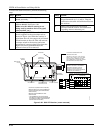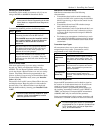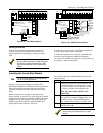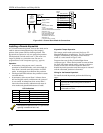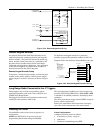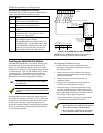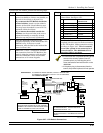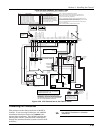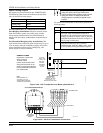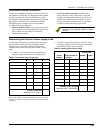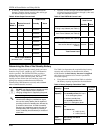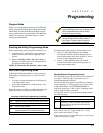
VISTA-40 Installation and Setup Guide
3-22
Installing the Audio Alarm Verification Module
U
L
Audio Alarm Verification (AAV) is not permitted
in UL installations.
• 685 Receiver software must be rev. 4.6 or
higher. Earlier versions will not hold the
phone line connection.
• Contact ID code for “Listen-in to Follow” is
606. Contact ID is the only reporting format
that will send a “Listen-in to Follow.”
• If you are also using a 4285/4286 VIP
Module, be sure to follow Figure 3-30 when
making connections.
The UVS consists of a UVCM and at least one UVST.
The UVCM board has a DC power jack and a 34-
position terminal block for making connections to a DC
power source, UVSTs, telephone lines, music source, or
to the 4286 VIP Module; and to a control panel’s voice
trigger and bell outputs (if required). Refer Figure 3-28
for wiring connections. For a detailed explanation of
the wiring connections and the functions of the DC
power jack and terminal block positions, refer to the
installation instructions that accompany the UVS.
If the phone plug is disconnected from the
control, the premise’s phones will not operate.
NOTES:
• When the AAV indicates that the audio alarm
verification session is completed, all keypad sounds
are restored. Sirens are restored if the alarm
timeout period has not expired.
• As part of its fail-safe software, the control limits
all audio alarm verification sessions to 15 minutes.
This is because once the session begins, the AAV
Module controls the duration.
• If a new Fire alarm should occur during a session,
the control breaks the phone connection and sends
the new Fire Alarm report, then re-triggers the
AAV Mode. All other dialer messages triggered
during ongoing conversation are held until either
the AAV Module signals that it is inactive, or the
15-minute timeout occurs.



